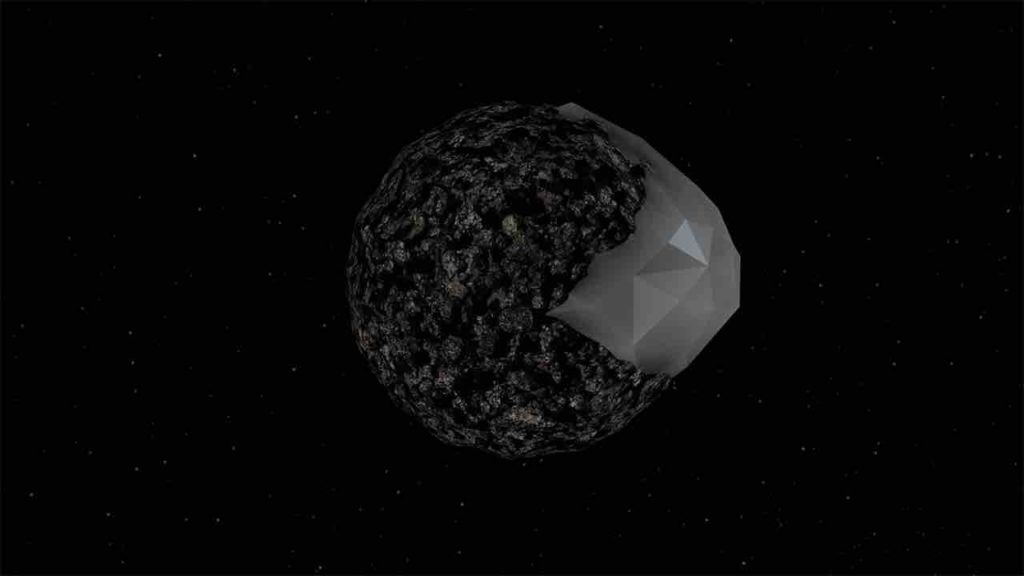Julie Tremble
The artwork: BPM 37093
BPM 37093, by Julie Tremble, is a short 3D animation that “tells the story”– the blurred line between fiction and reality, is intentional here—the death of a star and its slow material transformation: As the artist states, “BPM 37093 is a star, very similar to the sun, which is now dead. Scientists have discovered that through the process of dying, the star has almost completely turned into a diamond, as the sun will do in billions of years. The video is a fantastical representation of this scientific phenomenon, [and the] 3D modeling, a tool frequently put to use in documentary and fiction films to depict astronomical phenomena. The animation repurposes this presumably realistic technique, to illustrate how our understanding of certain natural phenomena, the perception of which is inaccessible to us, depends on fragmentary information, representations, and imagined associations.” This representation of the death of a star, symbolic of the (possible) death of the universe (and incidentally, that of the Internet) is also the birth of something else: in this case, a diamond. The highly accelerated temporality of a star’s extinction—1:14 for millions of years—adds depth to the whole exhibition project, which, in questioning the Web, also questions the notion of duration and instantaneity, as well as our representations of the world by way of a myriad of CGI images, which we should rightly be wary of.
The artist
Julie Tremble is a video and animation artist. Inspired among others things by cinema, literature and philosophy, she has devoted the last few years to studying the question of representation in astronomy. By way of this body of work, she is interested in the construction and diffusion of knowledge in contemporary society and in the delicate articulation of the concepts of science and truth. Julie Tremble’s work has been presented in artist centres, galleries and festivals in Canada, Europe and Indonesia. She is the recipient of a grant from the Conseil des arts et des lettres du Québec (CALQ) and was awarded the prize for the best work of art and experimentation as part of the 31st edition of the Rendez-vous du cinéma québecois.

